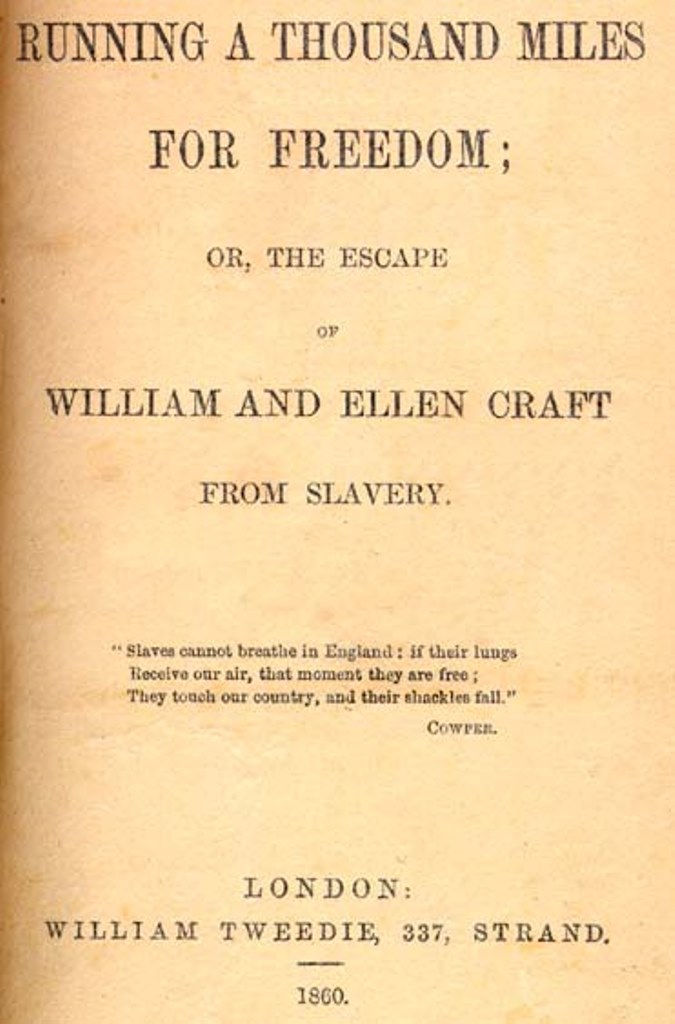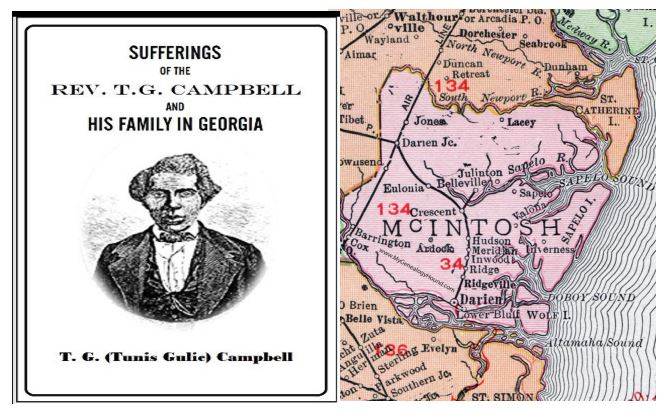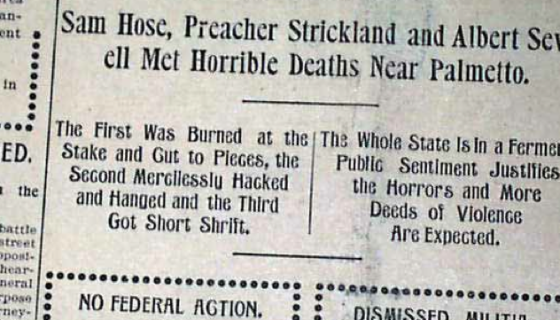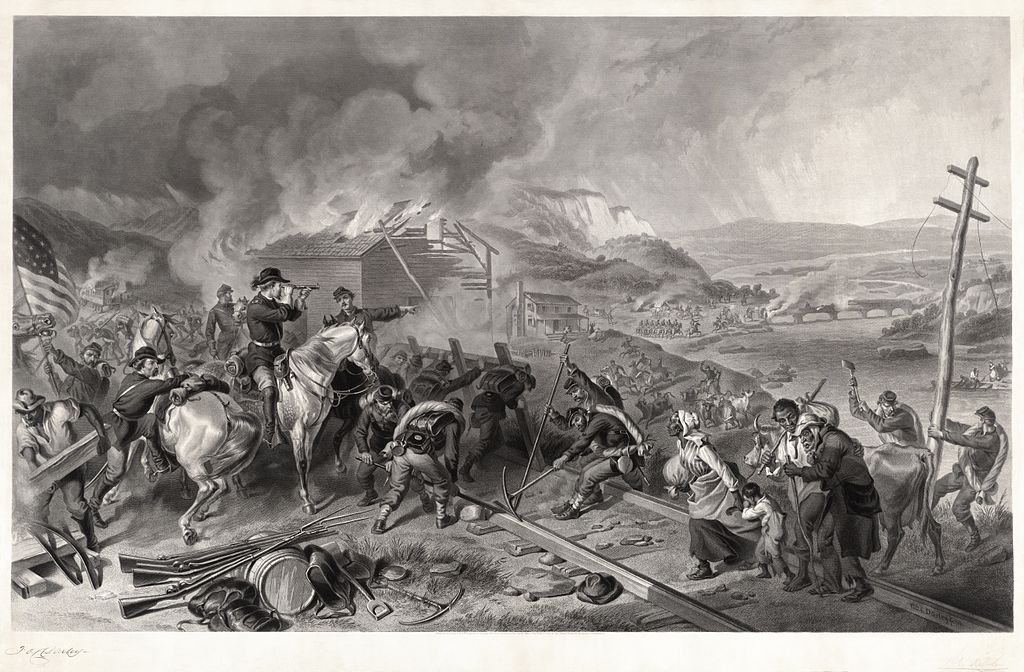By Jonathan Grant @Brambleman I remain appalled at the “content” (or rather, the lack thereof) taught in Georgia’s 8th grade classrooms about the state’s history—and especially the short shrift its deep and rich African-American history receives. Of course, the same can be said for the nation’s classrooms during Black History Month. (Why February? Comedian Chris Rock once said, “Because it’s the shortest month.”) There would be no need for such a thing as Black History Month if African Americans’ story had been told properly and effectively all along, but that didn’t—and hasn’t happened—so here we are. Well, here’s something. When I worked on my father’s book, this story—which I’d never heard before—jumped off the page at me. I was so enthralled by…
Tag: Georgia History
Take that, Scarlett O’Hara: The tale of Tunis Campbell is the true story of Georgia Reconstruction
Tunis G. Campbell, Sr. Georgia Black Reconstruction Leader By Jonathan Grant @Brambleman In 1861, a 49-year-old black abolitionist named Tunis G. Campbell, Sr., walked into a recruiter’s office in New York City and attempted to enlist in the Union Army. Like all African-Americans in the war’s early stages, he was rejected as unfit on the basis of his race. Campbell, a well-educated restaurateur, baker, and published author, didn’t give up. He wrote a letter to President Lincoln outlining a self-improvement plan for freed slaves after the war. As a result, he was sent to Union-occupied Hilton Head, S.C., to work with General Rufus Saxton. In 1865, Campbell—a tall, imposing man who dressed formally and wore spectacles—was appointed military governor of five Georgia…
Take that, Scarlett O’Hara: The tale of Tunis Campbell is the real story of Georgia Reconstruction
Tunis G. Campbell, Sr. Georgia Black Reconstruction Leader By Jonathan Grant @Brambleman In 1861, a 49-year-old black abolitionist named Tunis G. Campbell, Sr., walked into a recruiter’s office in New York City and attempted to enlist in the Union Army. Like all African-Americans in the war’s early stages, he was rejected as unfit on the basis of his race. Campbell, a well-educated restaurateur, baker, and published author, didn’t give up. He wrote a letter to President Lincoln outlining a self-improvement plan for freed slaves after the war. As a result, he was sent to Union-occupied Hilton Head, S.C., to work with General Rufus Saxton. In 1865, Campbell—a tall, imposing man who dressed formally and wore spectacles—was appointed military governor of five Georgia…
Lynching in post-Reconstruction Georgia: State-sanctioned terrorism
The following passage is an excerpt from The Way It Was in the South: The Black Experience in Georgia, by Donald L. Grant (Jonathan L. Grant, ed.) Published by University of Georgia Press, 2001. All rights reserved. Book webpage. Lynching in the New South: Georgia After the Ku Klux Klan won its battle to maintain white supremacy, the lynch mob of the New South assumed a major role in maintaining blacks as a caste of peasants and serfs. Between 1889 and 1918, Georgia had more lynchings than any other state, and 94 percent of the victims were black. By no coincidence, Georgia had the South’s lowest cotton-field wages during this time. The post-Reconstruction reign of terror was nearly totally demoralizing. With good…
5-Star Review of Brambleman: Neil Gaiman meets Flannery O’Connor
My favorite review (oldie but goodie) Here’ s a review of Brambleman by G.D. Brennan, a Chicago author who gives it five stars. I’m flattered, of course, and I’m especially gratified when a reader gets out of the book what I was certain I put into it. Brennan’s observation echoes my feelings. When I was pitching the book, I said, “Imagine Neil Gaiman and Joseph Heller collaborating on To KIll a Mockingbird.” Close enough, G.D. To purchase a copy of Brambleman, click here. G.D. Brenna writes: Imagine Neil Gaiman and Flannery O’Connor collaborating on a story about the legacy of a true-life ethnic cleansing in rural Georgia. Better yet, imagine that story being told by someone with both of those authors’ greatest…
The Civil War and Reconstruction in Georgia, Part 1
Above: Sherman’s March to the Sea (Savannah Campaign), 1864 This post is excerpted from The Way It Was in the South: The Black Expericience in Georgia by Donald L. Grant and Jonathan Grant (University of Georgia Press, 2001). All rights reserved. Publishing to critical acclaim, The Way It Was in the South: The Black Experience in Georgia was an American Heritage Editors’ Choice selection and also won Georgia’s “Author of the Year” honors for Dr. Grant. About the Author: Donald Grant (1919?88) received his Ph.D. degree from the University of Missouri and was professor of history at Fort Valley State College (now University) in Middle Georgia. He was also the author of The Anti?Lynching Movement: 1883-1932. And how this book came to be published after my…






